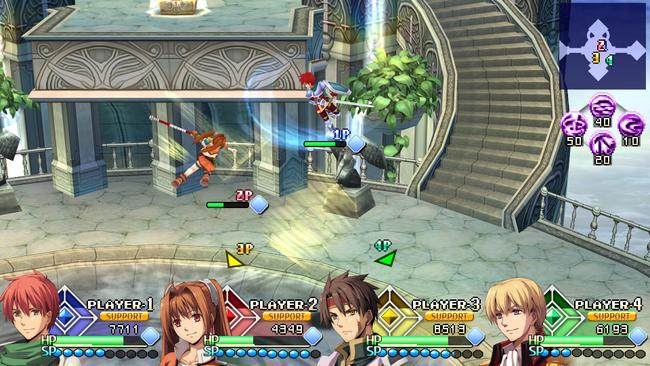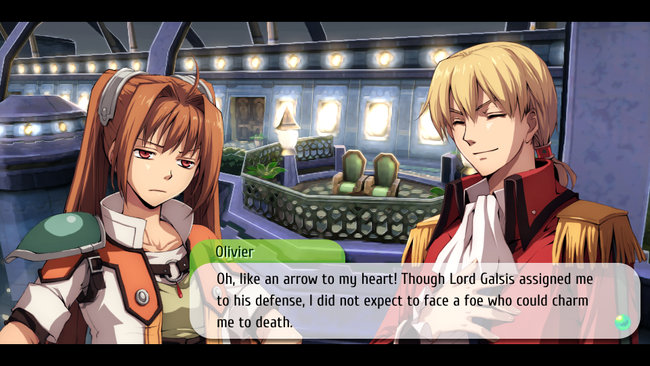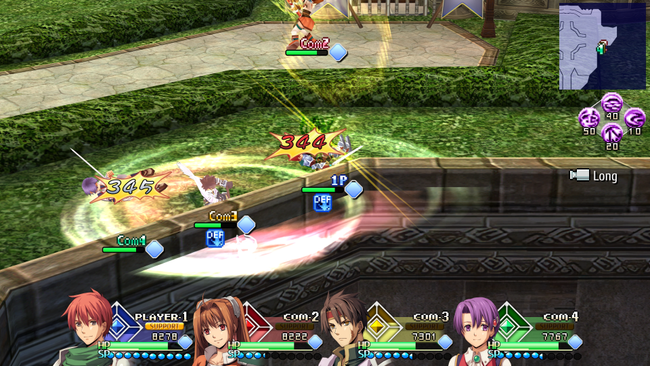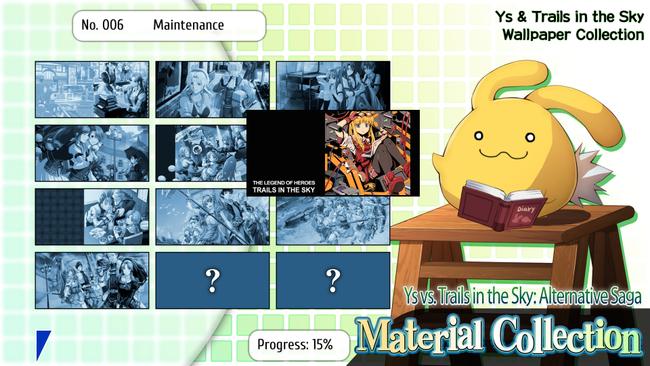
Against all odds, Ys vs. Trails in the Sky: Alternative Saga is a high-effort remaster of crossover fighter from a bygone era
The PSP was a wonderful little device, with hardware so specifically limiting that its games sat somewhere between the PS1 and PS2. I loved that console, and Falcom clearly did too. Their biggest flagships — Trails and Ys — both blossomed into the series they are today from the games on that platform. It only makes sense to sunset the system with a fighting game combining both series, right? Ys vs. Trails in the Sky: Alternative Saga was Falcom’s answer, and it’s definitely a weird one. Charming, yes. But very weird.
I would have never imagined we’d ever see this game released worldwide, even with this strange new era where, soon, every mainline Trails game will have been localized (Ys is close there too, I’m sure they’ll dig up a Ys V remake at some point). This is a relic of an entirely different era of video games. Fighting games were only starting to be the booming esport they are now, and with plenty of budget portables, there was an abundance of fighters that just got weird and experimental. Ys vs. Trails is exactly that, by basically just being a fighting game in the Ys Seven engine.

Imagine a world where a bunch of characters you liked fell into a mysterious world where they had to all fight each other at the behest of the two deities that run things. If you thought Dissidia then I think your head is in the right spot for the kind of crossover you can expect. Members of various Ys games and the core party of Trails in the Sky (with the exclusion of Kevin, sorry bud) appear and just beat each other up. It’s a loose justification. And you know what? Absolutely, I’m here for it.
There are five story campaigns available for players: Adol, Estelle, Geis, Kloe, and Tita. Frankly, it’s a weirdly lopsided selection that I think misses the mark on the Trails side. I like Kloe and Tita as characters, but I would have absolutely sacrificed one of them for Lloyd or Kevin. The former actually got his debut here before Trails From Zero, and the latter is not playable. The events of the story are also not much to write home about, but have that simplistic fanfiction appeal I can’t help but smile at. The characters are very simplistic versions of themselves, here mainly for fanservice, but that works for a game as loose as this. Lloyd being a cameo was fun, but I do wish he had a bit more to work off of than just saying “I am a detective, I have to find THE CLUES.” Every character has been flattened succinctly to fit in like this, but that’s about what I expected given the tone of the game overall.

Story Mode is basically a way to onboard players into the mechanics of the game, and it serves as a decent tutorial. You’ll get to see the gameplay loop of grinding levels and money, improving your characters, and mastering hard bosses. Ys vs. Trails can get kind of grindy, but that’s just part of the appeal of these portable RPG Fighters. Back then, this would have probably been your only game for a while, maybe a commute time-waster, and I can just see myself maxing out all the characters for hours on end. I wish everyone got a story mode to incentivize that more, though. You have an arcade mode for everyone, but I think it was a missed opportunity for Falcom back in the day to not lean into the fanservice and write a lot more possible character interactions. Outside of Story and Arcade, you also have both local and online multiplayer. Network Mode supposedly offers crossplay, but I was not able to look for any matches during the review period.
As a fighting game, I’d be hard-pressed to say this is very complex. You aren’t going on the main stage for EVO with this; you’re running sets in the EVO parking lot with the Switch’s kickstand propped up on the hood of a car. You’re getting absolutely plastered with your friends in a Discord call and running free-for-all matches for hours on end, with your own completely busted characters you spent hours grinding. The inspiration is more to something like Power Stone than Street Fighter, being very much a party fighter.
Battles are top-down, with every character having a dodge, jump, block, normal attack, a customizable set of four skills, and unique special attacks. Because both of the games featured in the crossover are RPGs, Ys vs. Trails also features equipment and a leveling system. There’s a shop where you can spend money you get from fights to upgrade a character’s skills, gear, or extra accessories. As if to throw balance entirely out the window, there are a lot of different status-afflicting accessories you can give your characters to just annoy your friends. While I wish there could have been some stage items, hazards exist to distract your try-hard friends just enough from their perfect victories.

I had fun with matches, especially as I worked through the story mode for Adol initially. The CPU players can be pretty challenging, and the more characters on screen, the more hectic you’ll find it. Oftentimes, a fighting game can lean one way, focusing on either evasion or defense, but I was surprised at how much I needed to be mindful of both. Because there are very few (or perhaps none at all) invincibility frames on wake-up, there’s rarely a moment of pause. You need to be either dashing away (the iconic Ys Seven and Celceta dodge, for what it’s worth, it feels great) or blocking immediately to reclaim some ground. Spamming this is discouraged because every character has their own stamina that can drain quickly if you aren’t careful. If you’re out of stamina, you’re open to attack. But that just makes it more exciting to bait out Special attacks, block at the very last minute, and make it out with a sliver of extra stamina to punish.
What I think elevates the package is how great a job refint/games has done on remastering the visuals. Everything here has been touched up and presented in a higher resolution. Character portraits, stages, backgrounds, and especially UI. This isn’t the kind of PSP remaster with blurry sprites or awkwardly pixelated visuals, looking no better than emulating on PPSSPP. There was a clear effort put into making sure everything was intact, but matching modern screen resolutions. 3D models, for example, are just as simple as they were on PSP, but at a higher resolution with clearer textures. 2D backgrounds for story cutscenes have been upscaled well without losing much detail, too, and the same can be said about 2D art or movie files.

With how beautifully everything was preserved, you can tell the team over at refint/games were huge fans. If not that, they at least had a lot of respect for the material, and the passion on display, I think, was the best part of playing this game. They went out of their way to get most of the established voice cast back to dub the characters in English, which is something you usually don’t see from delayed localizations like this. I swear, this whole re-release feels as if it were pulled from an alternate universe where this game was just localized on release. This is the rare, high effort PSP localization the game probably always deserved, even if it wasn’t destined to set the world on fire. It probably still won’t today, but I think fans of 2010s Falcom would get a lot out of it.
I’m just imagining how much I’d have adored this game if I had played it on PSP back in 2010. I was already spending countless hours grinding away in Dissidia, and that frantic portable fighting game chaos is on full display. It might not have anywhere near the amount of content, but this is a fun time to play with your other Falcom friends on a late night to unwind. However, it’s hard to deny how badly I wish this had come out just a few years later to widen the variety of characters they could pull from. Maybe we’ll save that for Ys vs. Trails 2, but I think we lucked out enough just getting this one to begin with.